Imagine this: You wake up with a nagging toothache, or perhaps it’s been years since your last dental check-up. You know you need care, but the thought of dental bills sends a shiver down your spine. For many seniors and low-income individuals in Ontario, the cost of dental care isn’t just a concern—it’s a major barrier, often leading to delayed treatment and worsening oral health. It’s a common misconception that dental care isn’t covered by any government programs, leaving many to suffer in silence. But what if there were programs designed to help? Programs that could ease the financial burden and open the door to the care you need? The truth is, Ontario offers several government initiatives and subsidies, both federal and provincial, specifically to help eligible residents access essential dental services beyond private insurance. It can feel like a maze to navigate, but you don’t have to do it alone.
This guide is your compass to understanding these vital programs, clarifying who qualifies, what services are covered, and how to apply. We’re here to turn confusion into clarity, making sure you know your options for a healthier smile.
The Unseen Barrier: Why Dental Care Costs Matter
It’s a stark reality for many Canadians: routine dental care is largely not covered by our provincial health insurance plans like OHIP.
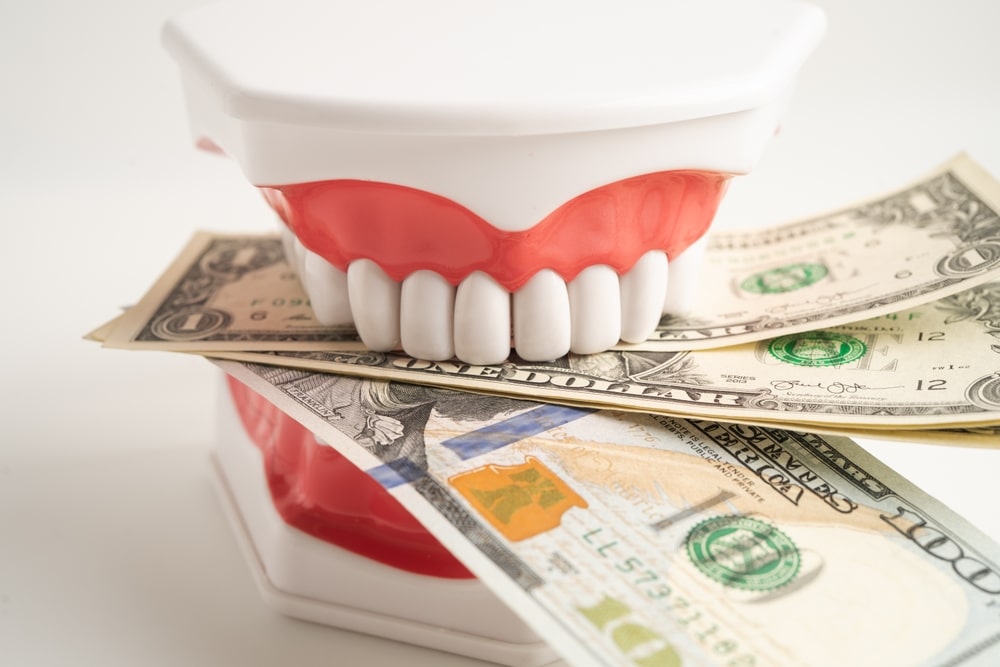
This means cleanings, fillings, extractions, and even more complex procedures often come with a significant out-of-pocket cost. For those on fixed incomes or facing financial hardship, these costs can quickly become insurmountable.
Research from the Canadian Dental Association highlights that cost is the single greatest barrier to accessing oral health care in Canada, with a significant portion of the population avoiding or delaying necessary dental treatment due to financial reasons.
This isn’t just about a comfortable smile; poor oral health can lead to serious broader health issues, including heart disease, diabetes complications, and chronic pain. The good news? You don’t have to compromise your health.
Your Guide to Affordable Smiles: Understanding Ontario’s Dental Programs
Navigating the various government dental programs can feel a bit like learning a new language. There’s a federal plan, several provincial plans, and each has its own rules.
But let’s simplify it. Think of it as a layered support system, with different programs designed to help different groups.
The Federal Lifeline: Canadian Dental Care Plan (CDCP)
Launched by the federal government, the Canadian Dental Care Plan (CDCP) is a significant step towards making dental care more affordable for eligible Canadian residents.
It’s designed to provide coverage for essential dental services, to those who need it most.
Who Qualifies?
The CDCP is gradually rolling out, but the core eligibility revolves around your adjusted family net income and your lack of existing private or employer-sponsored dental insurance.
- Residency: Must be a Canadian resident for tax purposes.
- Income: Your adjusted family net income must be less than $90,000.
- Insurance: You cannot have access to private or employer-sponsored dental insurance.
- Application: You must apply to the CDCP (applications are being phased in by age group).
What Does “Adjusted Family Net Income” Mean?
This term often causes confusion. Essentially, it’s your net income (Line 23600 from your tax return) minus certain deductions, then combined with your spouse’s or common-law partner’s adjusted net income.
It helps the government determine your financial need based on your household’s total income.
For example, a single senior with an adjusted net income of $25,000 would likely qualify, as would a couple with a combined adjusted net income of $80,000, assuming they meet other criteria.
What’s Covered?
The CDCP covers a range of essential dental services, with varying co-payment percentages (the portion you pay) based on your income bracket.
For those with adjusted family net incomes under $70,000, there’s no co-payment. Services generally include:
- Preventive services (e.g., cleanings, fluoride, sealants)
- Diagnostic services (e.g., examinations, X-rays)
- Restorative services (e.g., fillings)
- Endodontic services (e.g., root canal treatments)
- Prosthodontic services (e.g., dentures – full and partial)
- Periodontal services (e.g., deep scaling)
- Oral surgery services (e.g., extractions)
How to Apply:
The application process for CDCP is handled through Service Canada. Initial invitations are sent to eligible seniors, with other age groups to follow. You’ll typically apply online or by phone.
For detailed information on the CDCP and its rollout, you can visit the official Canada.ca website.
Ontario’s Helping Hand: Ontario Seniors Dental Care Program (OSDCP)
Specifically designed for low-income seniors, the Ontario Seniors Dental Care Program (OSDCP) provides free, routine dental care to eligible residents.

This program is provincially funded and focuses directly on the needs of older Ontarians.
Who Qualifies?
The OSDCP has clear criteria to ensure it reaches those who need it most:
- Age: 65 years or older.
- Residency: A resident of Ontario for at least 12 months.
- Income: A single senior with an annual adjusted net income of $22,200 or less, or a couple with a combined annual adjusted net income of $37,100 or less.
- Insurance: No access to private dental insurance or other dental benefits (e.g., through an employer or another government program that covers the same services).
What’s Covered?
The OSDCP covers a wide array of basic dental services, similar to the CDCP, ensuring seniors can maintain their oral health without financial strain:
- Examinations and assessments
- Preventive services (cleanings, fluoride, scaling)
- Restorative services (fillings)
- Oral surgery (extractions)
- X-rays
- Anesthesia
- Teeth Whitening
- And more.
How to Apply:
You can apply for the OSDCP online or by mail. If you don’t have a Social Insurance Number (SIN) or haven’t filed taxes, there’s also an option to have an eligible guarantor complete a section of the application form.
Once approved, you’ll receive a dental card that you can use at participating dental clinics or public health units.
For comprehensive details and application forms, visit the Ontario.ca website dedicated to dental care for seniors.
If you’re looking for a dental home that understands these programs and provides compassionate care, Viva Dental Orangeville offers a range of services for seniors and can help guide you on your journey.
Comparing Your Choices: CDCP vs. OSDCP
It’s natural to wonder if you can be eligible for both the federal CDCP and the provincial OSDCP, or which one is best for you. Here’s a simplified comparison:
| Feature | Canadian Dental Care Plan (CDCP) | Ontario Seniors Dental Care Program (OSDCP) |
| Administered By | Federal Government (Service Canada, Sun Life) | Provincial Government (Ministry of Health, Public Health Units) |
| Primary Target Group | Low-income Canadian residents (phased by age) | Low-income Ontario residents aged 65 and over |
| Income Threshold | Adjusted family net income < $90,000 (with varying co-payments) | Single: < $22,200; Couple: < $37,100 (no co-payment for covered services) |
| Age Requirement | Phased rollout; eventually all ages (no specific upper limit) | 65 years or older |
| Residency | Canadian resident for tax purposes | Ontario resident for at least 12 months |
| Insurance Status | No access to private or employer-sponsored dental insurance | No access to private dental insurance or other dental benefits |
| Coverage Scope | Broad range of essential dental services (co-payment possible) | Comprehensive routine services (free for covered services) |
| Program Interaction | Can co-exist with OSDCP, but benefits are coordinated to avoid duplication. | Can co-exist with CDCP, but benefits are coordinated to avoid duplication |
Navigating Overlap: The good news is that these programs are designed to complement each other, not necessarily cancel one another out. If you are eligible for both, the benefits are coordinated. This means one plan might cover what the other doesn’t, or one acts as the primary payer and the other as the secondary. It’s best to apply for all programs you qualify for to maximize your coverage.
More Provincial Support: Other Key Programs in Ontario
Beyond the OSDCP for seniors, Ontario offers vital dental programs for other specific demographics:
Healthy Smiles Ontario (HSO): For Children and Youth
This program provides free dental care for eligible children and youth 17 years and under from low-income households. It covers preventive, routine, and emergency dental services, ensuring children get a healthy start.
- Who Qualifies: Children and youth 17 and under from low-income families residing in Ontario.
- What’s Covered: Regular check-ups, cleanings, fillings, X-rays, urgent dental care, and more.
- How to Apply: Applications are managed through your local public health unit.
Viva Dental Orangeville is a family-friendly practice that understands the needs of young patients and can provide care covered by programs like Healthy Smiles Ontario.
Ontario Works (OW) and Ontario Disability Support Program (ODSP) Dental Benefits
For individuals receiving financial assistance through Ontario Works (OW) or the Ontario Disability Support Program (ODSP), dental benefits are often included as part of their health benefits package.
- Who Qualifies: Recipients of OW or ODSP, along with their eligible dependants.
- What’s Covered: Typically covers basic dental services, with some differences between OW and ODSP coverage (ODSP generally offers more comprehensive benefits).
- How to Access: If you are an OW or ODSP recipient, speak to your caseworker or local office for details on how to access your dental benefits.
Navigating the System: Practical Steps to Access Care
Understanding the programs is the first step; taking action is the next. Here’s a roadmap to guide you:
Your Personalized Checklist
- Assess Your Eligibility: Review the criteria for CDCP, OSDCP, and any other relevant programs (like HSO if you have children, or OW/ODSP if applicable).
- Gather Required Documents: Have your Social Insurance Number (SIN), recent tax returns, proof of residency, and any identification documents ready.
- Apply for Each Program:
- CDCP: Follow the phased application process through Service Canada.
- OSDCP: Apply online or by mail through the Ontario.ca portal.
- Other Programs: Contact your local public health unit for HSO or your caseworker for OW/ODSP.
- Await Approval: Once approved, you’ll receive information or a dental card.
- Find a Participating Dentist: Not all dentists participate in every government program. This is crucial!
Finding a Participating Dentist
This can be one of the trickiest parts. Here’s how to approach it:
- Public Health Units: For OSDCP and HSO, your local public health unit is an excellent resource. They often have lists of participating clinics or even offer services directly.
- Official Program Websites: The CDCP website (Canada.ca) will have a tool to help you find participating providers once the program is fully rolled out.
- Call Ahead: The most direct approach is to call dental clinics in your area and ask if they accept patients through specific programs (e.g., “Do you accept the OSDCP dental card?” or “Are you a participating provider for the Canadian Dental Care Plan?”). Viva Dental Orangeville is always available to answer your questions about payment options and accepted programs.
What If You’re Denied or Services Aren’t Covered?
It can be disheartening if you’re denied eligibility or discover a needed service isn’t covered. Don’t give up!
- Re-evaluate Eligibility: Double-check the criteria. Did you miss a document? Is your income calculation accurate? Sometimes, a small error can lead to denial.
- Contact the Program Directly: Reach out to Service Canada (for CDCP) or your local public health unit (for OSDCP/HSO) to understand the reason for denial and if there’s an appeals process.
- Explore Alternatives:
- University Dental Clinics: Dental schools often offer reduced-cost services, as students (under supervision) provide care.
- Community Health Centres: Some offer dental services on a sliding scale based on income.
- Emergency Dental Services: If you have an acute infection or severe pain, some hospitals or public health units offer emergency dental care.
- Payment Plans: Many dental practices, like Viva Dental Orangeville, offer flexible payment plans to help manage costs for uncovered services.
- Look for Local Charities/Grants: Occasionally, local organizations or charities may offer assistance for specific dental needs.
The Bigger Picture: Oral Health for Overall Well-being
Access to affordable dental care isn’t just about fixing a problem; it’s about prevention and maintaining your overall health. Regular check-ups and cleanings, even with assistance programs, are crucial.

They allow dentists to catch minor issues before they become major, painful, and expensive problems.
Taking a proactive approach to your oral health is an investment in your entire well-being.
Frequently Asked Questions (FAQs)
Q: Can I be eligible for both the Canadian Dental Care Plan (CDCP) and the Ontario Seniors Dental Care Program (OSDCP)?
A: Yes, it is possible to be eligible for both. The programs are designed to coordinate benefits. This means if you are covered by one, the other will likely act as a secondary payer for services, or cover services not fully provided by the primary plan. It’s always best to apply for all programs for which you meet the eligibility criteria.
Q: What if I don’t have a SIN or haven’t filed taxes?
A: For the OSDCP, you can still apply! You may need an eligible guarantor (someone who can confirm your identity and residency) to complete a section of the application form. For the CDCP, having a SIN and having filed taxes is generally required for eligibility verification, but specific guidance for those without these records may be available on the Canada.ca website or by contacting Service Canada.
Q: Do all dentists accept these government programs?
A: No, dentist participation in government programs is voluntary. This means that while many dental practices do accept these plans, not all do. It’s essential to confirm with a dental office directly whether they accept the specific program you are covered by (e.g., OSDCP card, CDCP).
Q: Are emergency dental services covered by these programs?
A: Generally, yes, essential emergency dental services are covered by programs like CDCP and OSDCP. However, what constitutes an “emergency” and the scope of covered treatment can vary. It’s always best to clarify with the program administrator or your dental provider in an emergency situation.
Q: What is a “co-payment” and how does it apply to these programs?
A: A co-payment is the portion of the cost of a dental service that you are responsible for paying, even with insurance or a government program. For example, with the CDCP, your co-payment percentage depends on your adjusted family net income (e.g., 0%, 40%, or 60%). The OSDCP, however, covers 100% of the cost of eligible services for qualifying seniors, meaning no co-payment for those specific treatments.
Ready to Take the Next Step?
Understanding the options for affordable dental care in Ontario is the first crucial step towards a healthier, happier smile. While navigating these programs can seem daunting, remember that help is available.
We encourage you to:
- Visit the official government websites: Canada.ca for the CDCP and Ontario.ca for OSDCP and Healthy Smiles Ontario, to get the most up-to-date information and application forms.
- Contact your local public health unit: They are an invaluable resource for provincial programs.
- Reach out to a trusted dental practice: If you’re in Orangeville, Ontario, Viva Dental Orangeville is here to provide patient-centered care. Our team understands the importance of accessible dental services and can discuss your options for receiving the comprehensive care you need. We’re committed to utilizing the latest dental technologies and creating a comfortable environment, helping you maintain a healthy smile for years to come.





